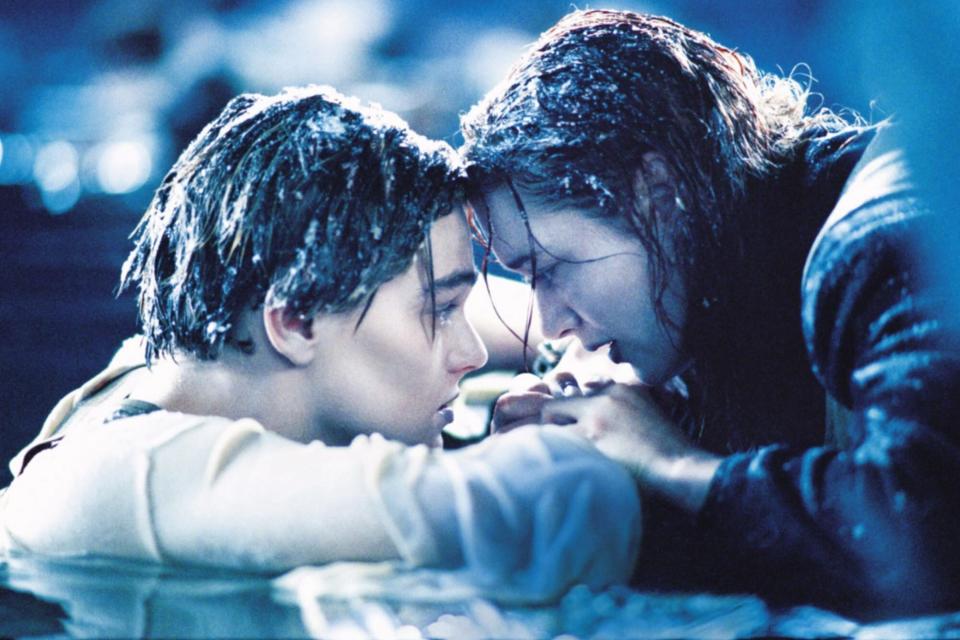James Cameron confesses Titanic floating door should have been smaller after new tests
After 25 years, James Cameron is offering a rare mea culpa, of sorts.
Ahead of his film Titanic's Feb. 10 theatrical re-release, the 68-year-old filmmaker took part in an upcoming National Geographic special, Titanic: 25 Years Later With James Cameron. In it, Cameron works with a team of scientists to recreate and test various theories about the film and the sinking of the titular ship.
Of course, the special's big highlight is Cameron testing the infamous and much-debated ending, in which Leonardo DiCaprio's Jack sacrifices his life to save Kate Winslet's Rose by letting her stay on a large floating door while he stayed nearby in the freezing water.

Spencer Stoner/National Geographic 'Titanic: 25 Years Later With James Cameron'
For years, fans, the stars themselves, and even the Mythbusters team have all posited ways in which Jack could have survived, and in the special, Cameron takes two stunt people of the same age, height, and weight as Titanic-era Winslet and DiCaprio, and puts sensors on — and inside — them as they're subjected to a number of tests to determine if Jack could have survived without jeopardizing Rose's safety.
The first test is a "baseline" meant to mirror what happens in the film. The makeshift Rose and Jack are placed in the same positions as they are in the film, and to no one's surprise, Jack's core body temperature drops pretty steeply, leading Cameron and his team to conclude that the film was, at least, correct that he would have died in the water.
Next, the team simulates various theories that have been suggested over the years — whether or not they could both fit (they could), whether Rose putting her life jacket under the raft would have helped, as posited by Mythbusters ("waste of time," per Cameron) — and more.

Spencer Stoner/National Geographic James Cameron recreated 'Titanic' floating door scene to see if Jack fit with Rose.
Ultimately, the team found that the best-case scenario would be for Rose and Jack to fit on the raft and balance so that their upper bodies would remain entirely out of the water. But, there was no benefit to them huddling together on the door because it made them unbalanced and shiver less — that violent shaking enabled Jack to better conserve heat, they found. As long as the two shivered, chests above water, on the raft, Jack could have made it "pretty long, like hours," according to Cameron.
"I really learned something interesting here, which is that when you're shivering and shaking like that underwater, it's conducting away heat very rapidly, but when you do it in air above water, it's actually working for you," he concedes.
While the scientists conclude that Jack could have "made it until the lifeboat got there" under this final scenario, Cameron points out that Jack and Rose in the film didn't have the luxury of knowing much about hypothermia and how to prevent it.

'Titanic'
"Final verdict: Jack might've lived, but there's a lot of variables. How much swell is there, how long does it take the lifeboat to get there," Cameron says. "In an experiment in a test pool, we can't possibly simulate the terror, the adrenaline, all the things that worked against them. He couldn't have anticipated what we know today about hypothermia. He didn't get to run a bunch of different experiments to see what worked the best."
The director further defends his ending by pointing out that it was a character choice. "Jack's survival might have come at the price of her life, [and] there's a code of chivalry that men had in those days. Add to it his individual character — he's in love with her, a grand epic love which is self-sacrificial — I think his thought process was, 'I'm not going to do one thing that jeopardizes her'... and that's 100 percent in character."
However, Cameron confesses, "Based on what I know today, I would have made the raft smaller, so there's no doubt."
Titanic: 25 Years Later With James Cameron — celebrating 25 years since the film's Best Picture victory at the 1998 Oscars — premieres Sunday at 9 p.m. ET on National Geographic, and streams the next day on Hulu.
Related content:

 Yahoo Movies
Yahoo Movies 
